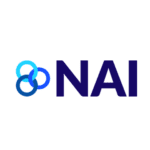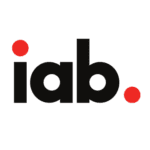Why are KPIs Important in the B2B Sector?
In the competitive B2B sector, tracking and analyzing key performance indicators are essential for business success. The KPIs mentioned in this blog offer valuable insights into customer relationships, sales performance, and overall business efficiency. By closely monitoring these critical metrics, B2B companies can make informed decisions, optimize their processes, and build lasting partnerships, ensuring long-term growth and prosperity in the dynamic business landscape.
What are the Most Critical KPIs in the B2B Sector?
To answer this classic question, “what are the most critical KPIs in the B2B sector?”, success in the business-to-business (B2B) sector hinges on building strong relationships, providing value to clients, and achieving long-term sustainability. To accomplish these goals, B2B organizations must closely monitor and measure key performance indicators (KPIs) that accurately reflect their performance and progress. We’ve selected a few as the top to monitor based on our customers’ experiences.
The most critical KPIs include:
1. Customer Lifetime Value (CLV)
Customer Lifetime Value represents the total revenue generated from a B2B customer over their relationship with the company. Understanding CLV is essential in gauging the long-term profitability of client accounts. By nurturing and retaining high-value clients, B2B companies can ensure sustainable revenue streams and increased customer loyalty.
2. Customer Churn Rate
The Customer Churn Rate measures the percentage of customers who discontinue their partnership with a B2B company over a specific period. High churn rates are concerning as they indicate dissatisfaction or loss of relevance. Reducing churn is critical to maintaining a stable customer base and avoiding the costly process of acquiring new clients to replace lost ones.
3. Customer Satisfaction (CSAT)
Customer Satisfaction is a key indicator of how well a B2B company meets its clients’ needs and expectations. Conducting regular surveys and feedback sessions can help gauge CSAT levels. A high CSAT score indicates strong client relationships, potential upselling opportunities, and positive word-of-mouth referrals.
4. Customer Retention Rate (CRR)
Customer Retention Rate measures the percentage of B2B clients that continue to renew their contracts or do repeat business over a given period. A high CRR implies that the company successfully provides ongoing value to its clients, fosters loyalty, and builds lasting partnerships.
5. Lead-to-Customer Conversion Rate
This KPI quantifies the percentage of leads that eventually convert into paying customers. Improving the Lead-to-Customer Conversion Rate is crucial for optimizing the sales funnel, refining marketing strategies, and increasing revenue. By understanding the conversion journey, B2B companies can identify areas for improvement and focus their efforts on high-yield prospects.
6. Sales Revenue and Growth Rate
Sales Revenue is a fundamental KPI that tracks the overall income generated from B2B product and service offerings. Additionally, monitoring the Sales Revenue Growth Rate allows businesses to measure their success in acquiring new clients and expanding their market share.
7. Customer Acquisition Cost (CAC)
The Customer Acquisition Cost calculates the expenses incurred to acquire new B2B clients. This metric helps in evaluating the efficiency of marketing and sales efforts. A low CAC indicates that the company is cost-effectively acquiring valuable clients, leading to improved ROI and profitability.
8. Average Deal Size
The Average Deal Size is the average value of each contract or purchase made by B2B clients. Tracking this metric provides insights into the scale and complexity of deals closed by the sales team. Increasing the average deal size through upselling or cross-selling can significantly impact the company’s bottom line.




